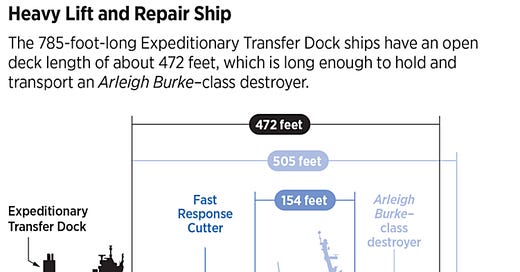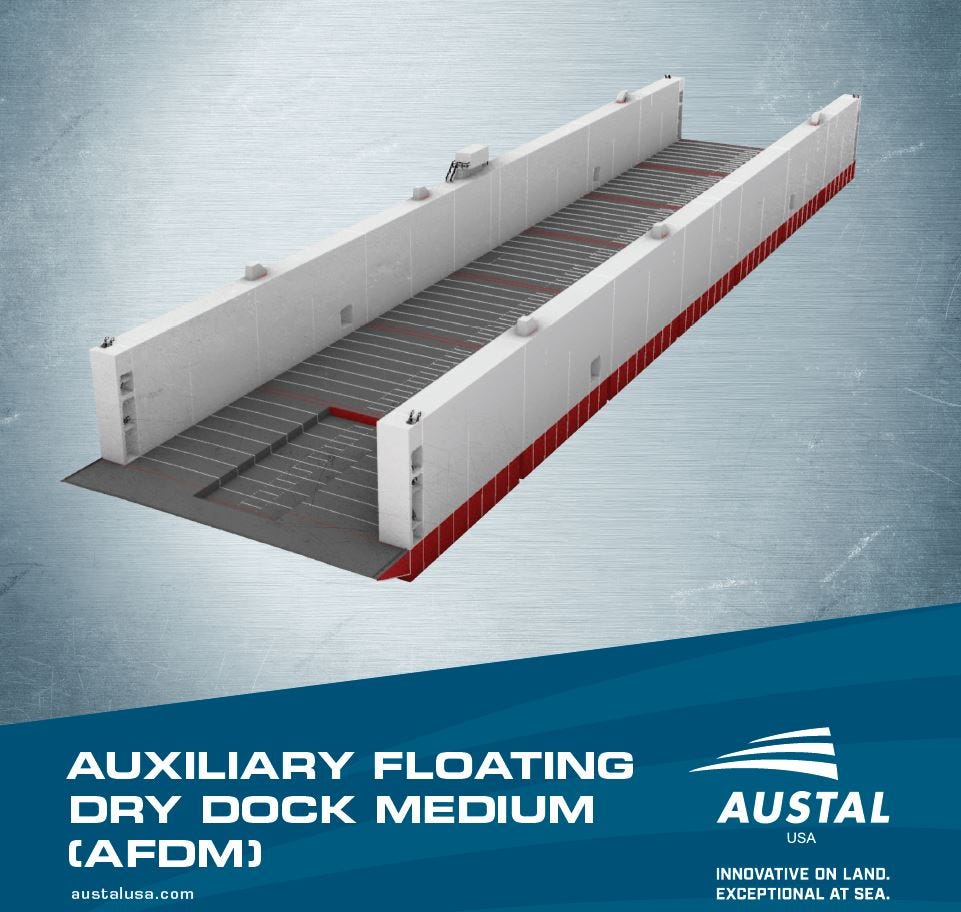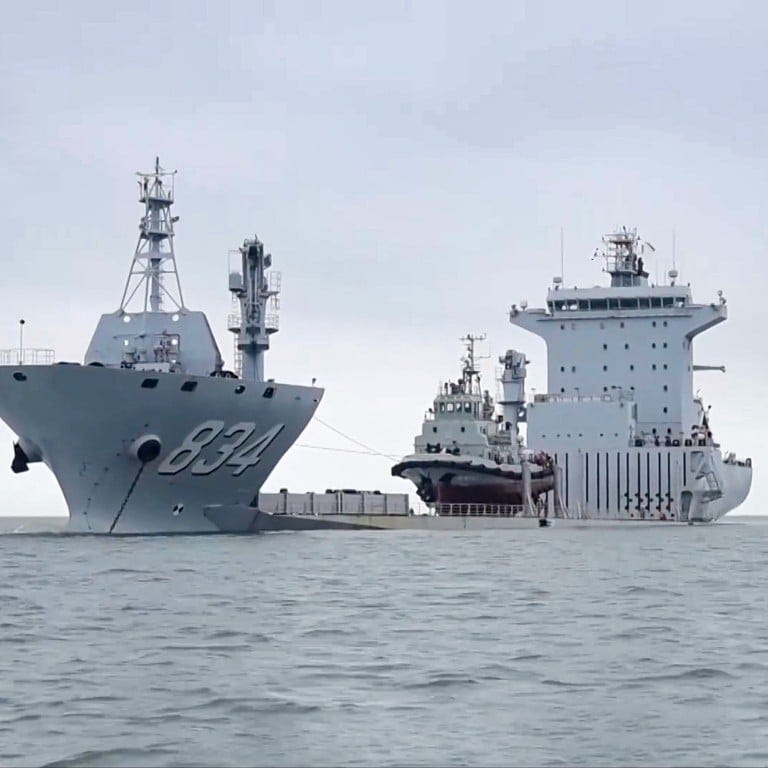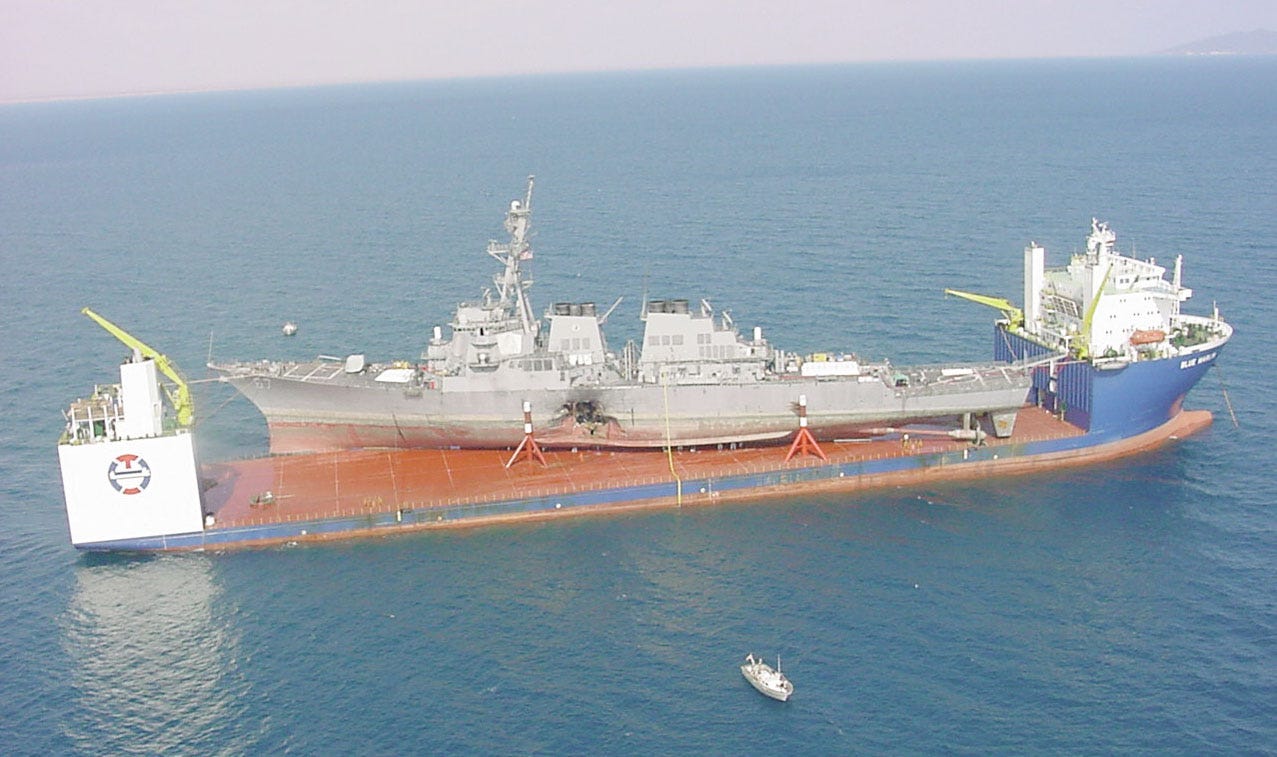If war should come in the western Pacific against the People’s Republic of China, it will not be a short war. It is delusional to think otherwise.
It will be a maritime and aerospace war. Aircraft will be shot down in significant numbers. Warships - which we do not have the industrial capacity to replace - will be hit and will need repair.
We don’t have the ability to service that need. We have run out of time - our leaders have dithered away precious time.
We no longer have the luxury of appreciating the problem and nit-picking every possible option - much less ignore it.
We will have to find good enough fast enough.
The “unsexy but important” are the key to sustaining the fight, as we continue to ignore them at our strategic peril.
Our friend Brent Sadler over at Heritage at the end of last month has a constructive idea, Navy Inactive Fleet Has Life Still: Expeditionary Transfer Docks Should Be Returned to Service.
At the 2023 naval conference WEST, the current Pacific Fleet Commander, Admiral Samuel Paparo, called for the capability to repair battle-damaged warships nearer the battlelines. The admiral’s vision includes teams of engineers and their equipment that can meet a damaged ship and effect rapid repairs.
However, fly-away teams will be hard pressed to effect major battle damage without gear like cranes, steel plate, cofferdams, and floating drydocks that proved instrumental in the Pacific during World War II.
To meet these needs today, new floating drydocks or modern heavy-lift ships will be needed.
When the destroyer USS Cole was attacked in the port of Aden, Yemen, on October 30, 2000, only the action of the sailors kept the ship afloat long enough to be repaired. She was returned to active service only after being transported thousands of miles for extensive repairs at a U.S. shipyard with the use of a contracted Dutch heavy-lift ship, the Blue Marlin.
In June 2023, Austal USA began construction of a new Auxiliary Floating Dock Medium for the U.S. Navy, but it will not be able to service the Navy’s aircraft carriers or amphibious assault ships (LHDs/LHAs).
Moreover, it is unclear whether the Navy will tow these new floating drydocks to forward bases where they would be of greatest utility in a future war.
On the other hand, a heavy-lift ship, in addition to the ability to lift a damaged warship out of the water, has mobility to meet damaged warships and move them to safer waters for repairs. Cina’s People’s Liberation Army Navy (PLAN) has already taken delivery of heavy-lift repair ships like the Yinmahu that can serve as forward deployed repair docks.
The U.S. ESDs were designed with the ability to ballast down into the water to take onboard small vessels like amphibious assault hovercraft, a capability that can enable them to function as limited heavy-lift ships.
You go to war with what you have … and if you read the full report linked above, it has other uses as well.
Let’s look at those AFDM under construction;
How about that PLAN heavy-lift repair ship, Yinmahu.
Let’s look at the Dutch Blue Marlin that was mentioned above.
Are you getting what I’m sending? Do you see the capability gap? Can you feel it? Makes the hair on the back of the neck stand up a little? Can you hear a clock ticking in the background? Get a funny feeling in your stomach?
Ever wonder, exactly, what we think our Navy might have to fight through…and why we seem not to be ready for it?








Any initial kinetics will be shellshocking. Most Americans have never been punched in the face or even understand what true adrenaline under pressure feels like. As I have said before, the Chinese will strike first and the normalcy bias will lead to inaction. The INDOPACOM and 7th Fleet watch floors will be stunned and paralyzed as they see hundreds of PLB’s from our aircrews and dozens of reports of ship impacts across the entire region. The stress those battle watch captains will endure is so overwhelming it can’t be described in a sentence. The sense of helplessness as our fleet is damaged and our aircraft are destroyed and our information is unreliable at best or not even available.
Now transpose that in an order of magnitude to our civilian leadership.
We need the military force necessary to immediately get back into the fight and restore dominance and get the information flow back. The ship repair proposal by Admiral Paparo is simply not realistic. We need the capacity at Pearl, Bremerton and San Diego as well as Long Beach and Los Angeles. We need the capability in San Francisco and protectable harbors. We need the trade skills. Most importantly we need a plan. We lack a plan.
We (as a nation) are not serious about war. If you tour the engine room of a WW II vessel, there is a pad-eye above every piece of machinery, and a series of pad-eyes to transfer it to the nearest hatch, for rapid removal and replacement. We no longer have that. To change out a pump these days, you first have to weld in a stiffener, and a pad eye. Then you need to wrestle it out of the engine room, because we do not have that series of pad-eyes. There are also no hatches. You need to cut open the hull, or a couple of decks, to remove and replace machinery.
Similarly for our land-based vehicles and equipment, field repairs are ancient history. If just one component fails, the vehicle needs to be retrieved by a larger vehicle, or else abandoned. We no longer have robust, field repairable equipment.
Unless we use our superior air power, to deliver death from above, the bad guys might could win.